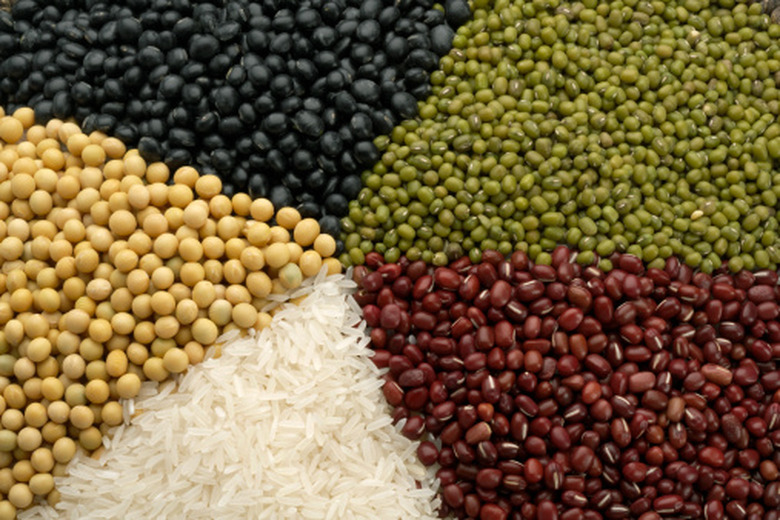What Seeds Are Best For Science Projects?
Using seeds in science class is an easy and engaging way to introduce students to genetics, food production, horticulture and biodiversity. Using plants instead of animals is not only humane but it teaches students to understand the process of growth in a hands-on way. Plants teach about the symbiotic relationship between the soil and the seed as well as the process of photosynthesis, which allows the plant to produce its food. Seeds are chosen by germination times, ease of growth, heat/light requirements, size of seed and size of mature plant, and length of growing time. Use is considered too, as food and blooming plants are more interesting to the students, since after the experiment they can take the plants home for enjoyment.
Bean Seeds
Bean Seeds
Bean seeds are usually used to develop lessons on factors for germination. Bean seeds are large and the sprouts are easily viewed and not readily broken. One experiment involves factors for germination where varying conditions such as pre-soaking and providing a heat source for planted seeds are used to determine which method increases sprouting times.
Cucumber or Squash
Cucumber or Squash
Cucumber or squash seeds are large and easy to germinate. These seeds are good for starting in clear containers to watch how light and fertilizer impact root and sprout growth. These plants are also good for schools with plots or greenhouse accommodations, as the plants can be relocated and studied for fruit maturation.
Flower Seeds
Flower Seeds
Sweet peas, alysum and forget-me-nots are easy seeds to start in class. Choose seeds that are regional wildflowers such as coneflowers or columbines. Use these seeds to teach horticulture and propagation, biodiversity, regional flora and genetics.
Seed Pairings
Seed Pairings
Teach propagation and plant pairings by growing mutually beneficial plants. If the school has a plot or greenhouse, grow indigenous corn and bean plants to show how Native Americans paired crops. Grow basil and tomato together to show culinary links. Grow nitrate-fixing legumes, or plant marigolds for their insect-repellent properties. Show how plants produce natural barriers such as "hairy" stems, thorns, sap or chemicals to help them survive.
Carnivorous or Sensitive Plants
Carnivorous or Sensitive Plants
Bring a plant from the paleolithic to the classroom with the Venus flytrap or other carnivorous species. These plants are fascinating to students and demonstrate how plants, like other living things, adapt to their environment. These seeds are difficult to grow and slow to mature, but an adult plant can be combined with the seed, and the seedlings used for future classes. The sensitive plant species of mimosa is an easy seed to start and grow. This plant responds to touch and closes its leaves when touched.
References
Cite This Article
MLA
Richards, Amanda. "What Seeds Are Best For Science Projects?" sciencing.com, https://www.sciencing.com/seeds-science-projects-7953780/. 22 November 2019.
APA
Richards, Amanda. (2019, November 22). What Seeds Are Best For Science Projects?. sciencing.com. Retrieved from https://www.sciencing.com/seeds-science-projects-7953780/
Chicago
Richards, Amanda. What Seeds Are Best For Science Projects? last modified August 30, 2022. https://www.sciencing.com/seeds-science-projects-7953780/
